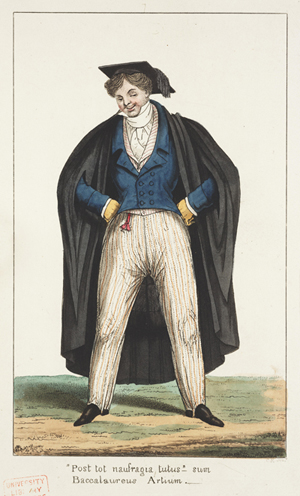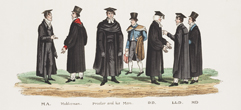A collegiate university of men and women
 |
Cartoon from Gradus ad Cantabrigiam (1824) (Cam.c.824.80) |
At first, teachers and students lived in rented hostels. The earliest college was Peterhouse, founded in 1284 as an autonomous institution with endowments to support its members, all senior scholars, and statutes to direct their activities. Colleges had royal, aristocratic or guild founders, most with pious motives. Later establishments began to accommodate and teach undergraduates and participate in university governance and office-holding. Colleges commissioned grand new buildings - think of King’s College chapel - or occupied former monastic premises, as at Jesus, constructing the cityscape and framing the student experience of Cambridge.
By the mid-nineteenth century, calls for expansion of educational opportunities for women resulted in the establishment of two colleges, Girton and Newnham. Despite admission to lectures and examinations however, women waited until 1948 for full university membership and conferring of degrees. Gradually, from 1972, all-male colleges embraced co-residence.
With time, the student body has grown and diversified. The annual medieval intake, dominated by sons of local yeomanry and their urban equivalent, never topped 500; today’s multi-national cohort is, every year, ten times that number.
Click to view larger images:


